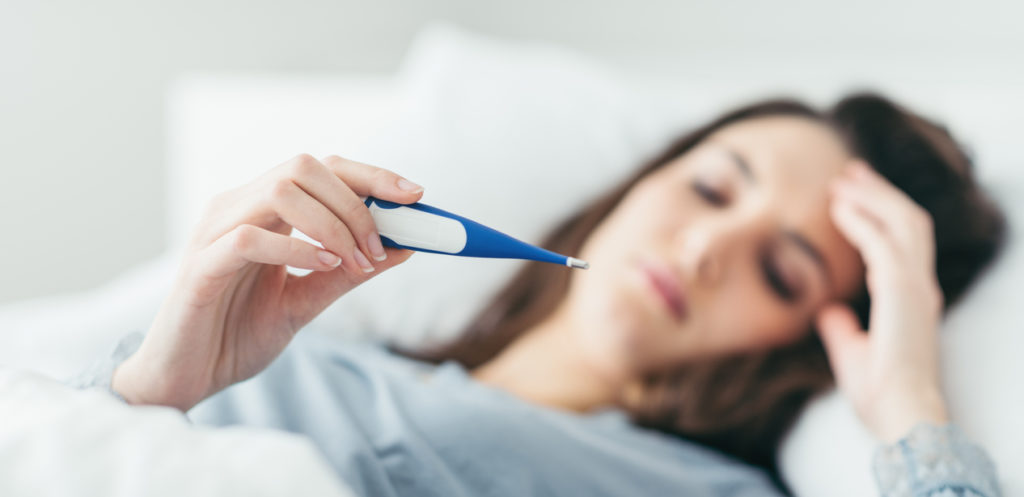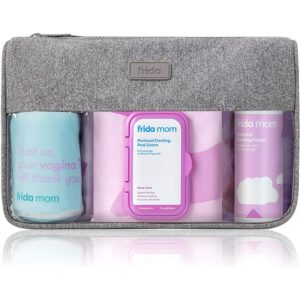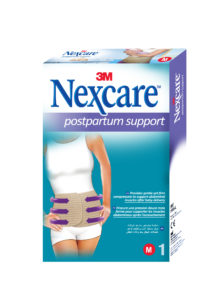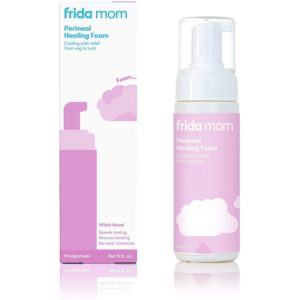After giving birth, many mums face what is known as postpartum fever. While some consider it a normal thing after childbirth, many doctors and experts believe the opposite. So, what is postpartum fever? What causes it? What are the symptoms? How to protect yourself from it? All the answers you need are here.
What is postpartum fever?
Postpartum fever is a serious illness that mums might face after giving birth. Mums might experience this fever during their postpartum period, which is the first 4 to 6 weeks after childbirth. If the mum’s body temperature exceeds 38 degrees for more than 24 hours during the first 10 days after giving birth, it is diagnosed as postpartum fever.
Most common symptoms
- – High body temperature which exceeds 38.5 degrees.
- – Severe pains in the pelvis and lower abdomen.
- – Experiencing unusual vaginal discharge that is either funky smelling or yellow colored.
- – Loss of appetite.
- – Headache.
- – Severe exhaustion around the clock.
- – Rapid heartbeat.
- – Pale skin, which is also an indicator of blood loss.
- – inflammation of breast tissue, also known as mastitis .
Do all mums get postpartum fever?
Some mums are more likely to experience postpartum fever when:
– they gave birth naturally.
– mums give preterm birth.
– they have anemia.
– mums gain weight excessively.
– experiencing STDs during pregnancy.
– experiencing excessive bleeding after birth.
– the birth is delayed even after the mum’s water breaks.
What might cause it?
There are many conditions that can cause postpartum fever, one of them is anemia as we mentioned before. But there are more things that can cause this fever such as:
1| Bacterial vaginosis, which is usually caused by STDs.
2| Getting several vaginal examination from your gynecologist.
3| Using unsensitized tools when getting a vaginal examination.
4| Giving birth in an unsensitized place.
5| Using vaginal wash incorrectly during postpartum.
6| Obesity.
7| Not removing the placenta fully from the mum’s womb.
How to protect yourself against it?
There are a few steps that mums-to-be can take to avoid postpartum fever. Those steps are for during the pregnancy and after.
Before childbirth:
1| Eat well.
Good nutrition during your pregnancy provides you with all the necessary supplements and vitamins. This will prevent anemia which is one of the main causes for this fever.
2| Drink water.
Yes, it is as simple as that. Hydration plays a huge role in protecting your body against this fever. Staying hydrated and drinking a lot of water is the easiest way to clean your body and keep it bacteria free.
3| Check your urinary tract.
The urinary tract is the body’s drainage system for removing urine, which is made up of wastes and extra fluid. Some mums experience inflammation in their urinary tract, and the worst thing they do is ignore it. The urinary system is right next to your uterus, any inflammation happening there can move on to your uterus and cause you issues like postpartum fever. That is why it is so important to deal with this instantly and keep checking with your doctor.
After childbirth:
1| Keep checking your blood pressure and body temperature regularly.
2| Stay physically active as much as you can. Remember not to overwork yourself.
3| Avoid taking any medications without consulting your doctor.
4| Don’t take too long when showering or bathing.
5| Try to keep up with breastfeeding as it helps uterus contractions and prevents bleedings.
Read more on things to avoid during postpartum.
Remember, you can always make your postpartum journey easier and smoother by preparing right and getting everything you need.









